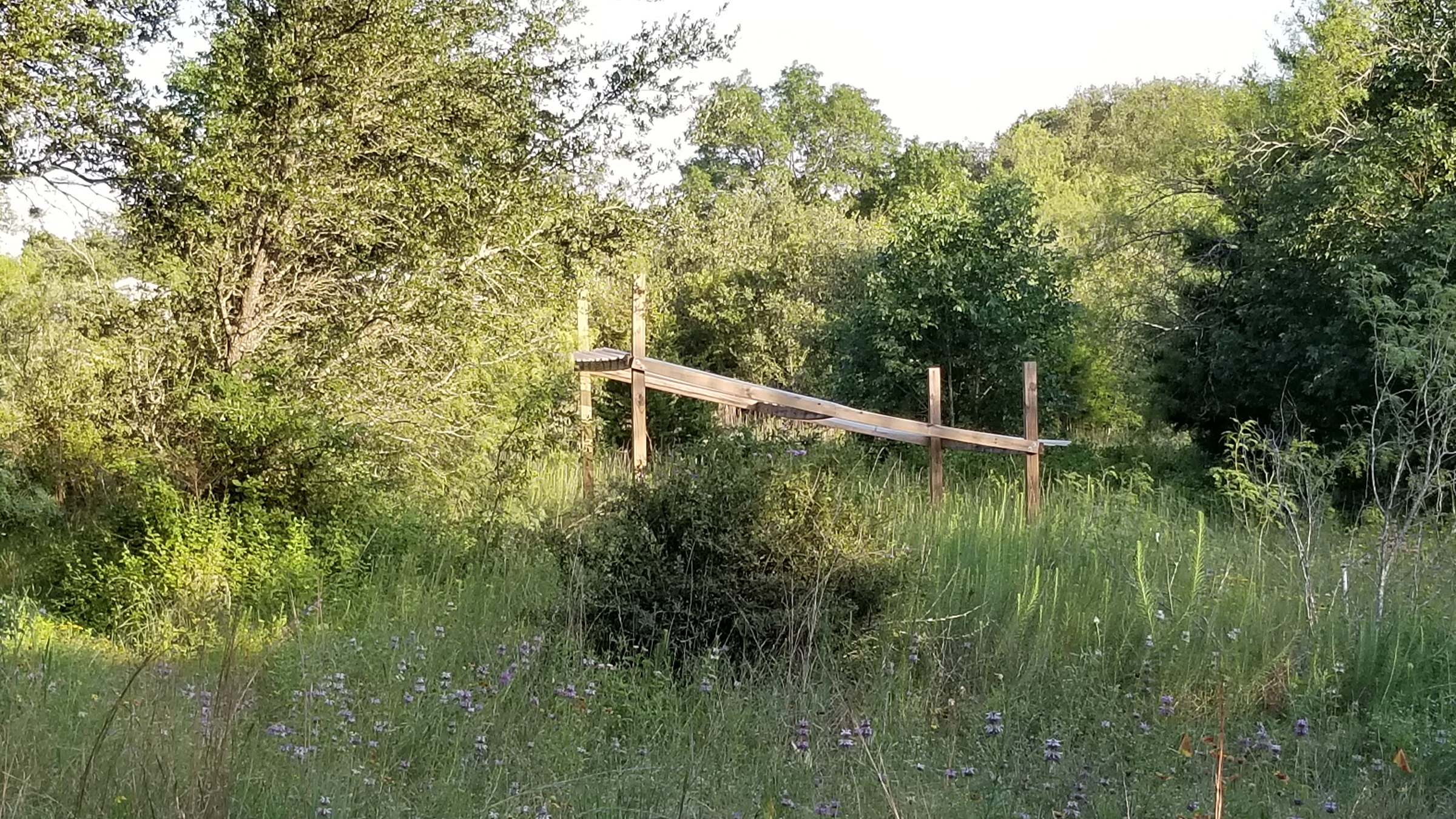Natural Labs: UT Field Stations Help Predict Drought Impact
UT scientists study how droughts affect local ecosystems at the Brackenridge Field Laboratory and the Stengl Lost Pines Biological Station.

A rain-out shelter at UT Austin's Brackenridge Field Lab helps researchers simulate the effects of drought on the ecosystem.
Texas is no stranger to drought. Climate change and population growth have further strained water resources in the state. University of Texas at Austin field stations Brackenridge Field Lab (BFL) and Stengl Lost Pines (SLP) are providing badly-needed information on the impacts of drought, including in an important new study that has just been published in the Proceedings of the National Academy of Sciences.
More than a decade ago, a group of ecologists launched the International Drought Experiment and invited researchers from around the world to replicate their standardized procedure for creating artificial droughts in grasslands and shrublands. The goal is to better understand how plant growth may change in a world of more frequent and more intense droughts. Scientists answered the call at 100 sites on six continents.
Research scientist Rob Plowes initiated UT Austin’s participation in the study in 2016 when they constructed three rain-out shelters at each site to evaluate plant community responses to a simulated long-term drought. These shelters with associated control plots were implemented at both BFL and SLP. Each year, researchers assessed the plant communities. Graduate and undergraduate students were trained to help the field station research team to set up the sites and collect the data. In 2019, Jason Lawson, field station manager, took on the responsibility of managing the study, and Amy Wolf, assistant professor in the Department of Integrative Biology, is now the faculty lead for the program.
“The plots consist of three treatment sites and three control sites,” Lawson explained. “The treatment sites have rain-out structures over them, which prevent 50% of the water that would normally fall onto the area from reaching the soil, thereby simulating drought conditions. Each spring and fall, the sites were surveyed to determine plant community composition and relative abundance in both the control and treatment plots.”
The rain-out structures were removed in 2020, and the field stations are now beginning to look at how plant communities continue to change in response to the simulated drought recovery created by the removal of the rain-out structures.
And the result of these surveys? They found that when droughts were more severe—like those that occur in a certain area just once a century—than the kind that typically occur every few years—the loss of aboveground plant growth was 60% greater. The results indicate that global impacts of projected increases in drought severity have been significantly underestimated and that drier and less diverse sites are likely to be most vulnerable to extreme drought.

Rain-out shelters at the Stengl Lost Pines field station helps researchers simulate the effects of drought on the ecosystem.
In times like this, where water is a major concern, Lawson points out the value of having these kinds of surveys at UT Austin field stations.
“As our own field station network continues to grow, we should be looking to [multi-site] networks like these to provide a framework for how to implement meaningful large-scale and long-term studies across Texas to improve our understanding of the ecology of Texas and the impacts we’re having on our native environment,” Lawson said.
“The major point is the value of networked studies in ecology,” Plowes explained. “The value of repetition across a large spatial scale is on full display. These studies allow us to understand the drivers and consequences of these changes, to allow predictions, forecasts and management possibilities.”
“Brackenridge Field Lab’s participation in this study reflects the importance of networked studies,” Plowes elaborated. “In this case a program of international networked studies, nested within the Texas Field Station Network at UT Austin.”
UT’s Lady Bird Johnson Wildflower Center will soon join the International Drought Experiment. Together, UT’s field stations provide secure places for these studies, ensuring that researchers better understand Texas ecosystems and also address globally important questions.



